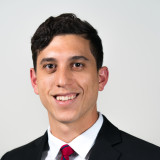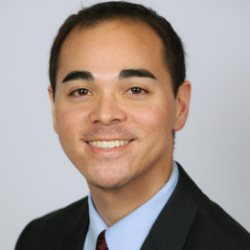 I was excited and honored to participate as a speaker during one of the Rapid Fire Abstracts sessions and as a moderator for one of the Deep Dive sessions on aortic dissection essentials at the May 2019 American Association for Thoracic Surgery (AATS) 99th Annual Meeting in Toronto. These sessions were absolutely outstanding.
I was excited and honored to participate as a speaker during one of the Rapid Fire Abstracts sessions and as a moderator for one of the Deep Dive sessions on aortic dissection essentials at the May 2019 American Association for Thoracic Surgery (AATS) 99th Annual Meeting in Toronto. These sessions were absolutely outstanding.
To my knowledge, this was the first time that AATS leadership and the conference planning committee included Rapid Fire Abstracts sessions. The entire leadership must be congratulated for such a great endeavor! Each session included a dozen or more brief presentations (a three minute presentation followed by a three minute discussion). Given that the attention span of healthy adults is commonly estimated to be 10–20 minutes and that, unless carefully guided, most people tend to lose focus after a few minutes, the six minute timeframe for topic presentation and discussion was perfect.
No matter how many brilliant talks are thrown our way, we humans are wired to hook our attention into just a few key points, and the format of the Rapid Fire Abstracts sessions took this into consideration. In a busy, information-packed meeting such as the AATS conference, a highly focused talk with enough time for only key points to be addressed is extremely valuable.
I first encountered this kind of session during the European Association for Cardio-Thoracic Surgery meeting few years ago, and at that time I thought it was a great educational and right-to-the-point approach. At the recent AATS conference, these short presentations covered various topics and had the following major advantages:
- They empowered the AATS membership by increasing member representation at the podium and enhancing active member participation, both of which made for a more lively and interactive meeting.
- They disseminated knowledge in a straightforward manner that precluded repetition and the recycling of existing knowledge.
- They afforded each presenter the option of submitting his or her presentation to the "Journal of Thoracic and Cardiovascular Surgery" for consideration as a peer-reviewed manuscript.
- They provided younger cardiothoracic surgeons and members an opportunity to be involved and to present their work in a concise and precise manner.
- They presented a fantastic opportunity for each presenter to refine and deliver their “elevator pitch” in only three minutes.
In addition to the Rapid Fire Abstracts sessions, the Deep Dive sessions on aortic disease, rheumatic valve disease, heart and lung transplant, mechanical support devices, and various other topics gave members and participants an opportunity to take a “deep dive” into specific areas and problems. These sessions enabled the audience to concentrate on their area of interest or concern and to delve more deeply into specific information and solutions.
Another great addition to the meeting was the engagement of young, newly elected members as discussants and moderators, which delivered both practical and psychological benefits. The practical benefits are that the scientific workload of the meeting was shared by more people and the appropriate work got done, even as the younger participants gained valuable knowledge in how a large scientific meeting is planned and conducted. Additionally, meeting attendance increased, which has a positive domino effect on everyone involved, including scientists, industry, and vendors. The psychological benefits are of vital importance as well: What a remarkable way to appreciate and energize the organization’s members, who are the soul and the vibrant moving force of our specialty. Learning from, listening to, and respecting senior surgeons and the giants of cardiothoracic surgery for their remarkable contributions, and giving leadership opportunities to talented mid-career individuals who, as they climb the ladder of success, can in turn help and inspire younger surgeons to contribute to our field, are great ways to equip today’s cardiothoracic surgeons and continue a legacy of the highest-quality patient care.
Image by Sergey Nivens / Shutterstock






